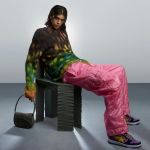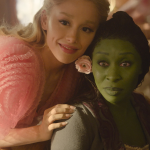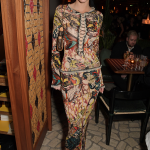
Who are the new collectors of archive fashion?
They have in common patience, perseverance, a dense network (and a lot of money)
September 1st, 2022
Why are we obsessed with collecting objects? Perhaps out of nostalgia, compulsion, or the status symbol that comes with owning something no one else can have. The fact is that today's most avid supporters of archive fashion, even before celebrities and even more than the brands themselves, are private collectors. Finding a monogrammed silk shirt by Tom Ford for Gucci is more relevant than the latest Supreme release, a tendency that signals a vision of fashion detached from the eternal cycle of trends or the modern marketing tricks of big brands. Gen Z shares their thrift under the hashtag #ArchiveFashion, which has had over 427 million views on TikTok, while vintage shop accounts such as Studded Petals accumulate hundreds of thousands of followers. In its 2021 report, The Real Real confirms the growing interest in archival clothing, showing that in every category on the site, from watches to handbags to ready-to-wear, sellers made more than the previous year in vintage items, with sales growth of +67% between the first and second halves of the year, with brands such as Jean-Paul Gaultier, Issey Miyake and Versace registering huge peaks for items originally released in the 1990s.
What does "archival fashion" mean exactly According to a definition by FIT's Mears reported by Vogue Business, «among the boxes to be checked are: a garment made exclusively for the catwalk, a model worn by a major star or that has received enormous public attention, a significant piece in a brand's history.» Following these dictates, a new generation of private collectors is on the verge of monopolizing archival fashion, competing with museums, foundations and designers themselves. These include personalities such as Stephanie Seymour, the supermodel and avid fan of designer Azzedine Alaia, who decided to wear a dress by the eponymous brand for her wedding, coordinated with that of her maid of honor, Naomi Campbell. Adrian Appiolaza, on the other hand, is a designer who treasures some of the most relevant items ever created by Comme Des Garçons, from Rei Kawakubo's 'Body Meets Dress, Dress Meets Body' to the 'Hiroshima chic' of the early 1980s. Journalist Alexander Fury is a compulsive buyer when it comes to John Galliano designer clothes, while model and musician Daphne Guinness hides a passion for Alexander McQueen. At the same time, Michael Kardamakis, recently interviewed by The Unknown Vlogs, is the founder of ENDYMA, a fashion archive that includes designers of the calibre of Raf Simons, Rick Owens, Junya Watanabe as well as being the owner of the most extensive collection of Helmut Lang suits. Neil Leonard of Lab2022 recently told Vogue.uk of his passion for Tom Ford's Gucci archive, while David Casavant, at 30, rents out his vast collection to celebrities such as Solange, Lorde, Kim Kardashian and Travis Scott, after using the money he inherited from his parents to scour eBay for second-hand fashion for a decade. Emblematic, however, is the case of Sandy Schreier who in Detroit keeps the largest private fashion collection in the United States, has lent items to the Metropolitan Museum of Art several times and regularly makes donations, such as the 165 items she donates to the Costume Institute.
Fashion collecting used to be a marginal activity: before e-commerce, the rarest pieces were usually sold at auction houses, bought by a few wealthy collectors or specialized museums. But the race to buy collectables is intensifying, with everyone crying out to get their hands on rare items thanks to easier access through a host of new websites and apps. Although capital is needed to compete with the big collectors - a Valentino Haute Couture dress can cost more than $45,000 - the landscape has changed dramatically. «We're often competing with private buyers for the same pieces - Jessica Regan, associate curator at the Costume Institute, told BOF - Prices for fashion collectibles have risen 400 per cent since 2014 with a digital marketplace representing around 5,000 auction houses, according to data published by Bloomberg. A camouflage bomber jacket by Raf Simons, which sold for a few thousand dollars in 2001, can fetch up to $42,000.»
@noausterity Reminder to invest in your wardrobe wisely. It will last a lifetime and appreciate in value. Last one of these sold at auction for $3,000 with aftermarket prices falling between $8,000 and $10,000! #chanel #fashion #archivefashion #fashiontiktok Avril 14th - Aphex Twin
Fashion, like art or antiques, can be selected and displayed. The archive serves as inspiration for designers, celebrates the golden ages of brands and records their history. It can be a valuable tool for marketing teams, to raise awareness through partnerships with retailers, serves as material for museum exhibitions or when dressing a celebrity. Some brands organize archive sales where they offer garments from past seasons for sale to get rid of unsold surplus and feed the attentions of true fans. As in a narcissistic complex, fashion is self-generated by seeing in its past the reflection of future collections and vice versa, while collectors, in the age of all at once, mass production and abundance, rediscover the art of patience in looking for a pair of Prada Mary Jane's from the 1990s, waiting for years to find them at an auction and ending up finding them, by chance, in a modest second-hand shop in Piccadilly. Patience, perseverance, a dense network of acquaintances (and a lot of money): collecting is increasingly mainstream.



























































